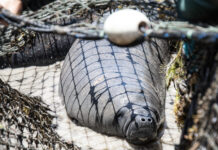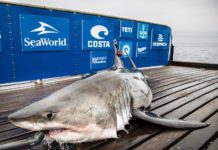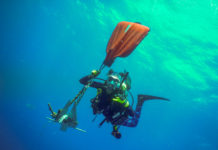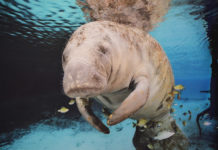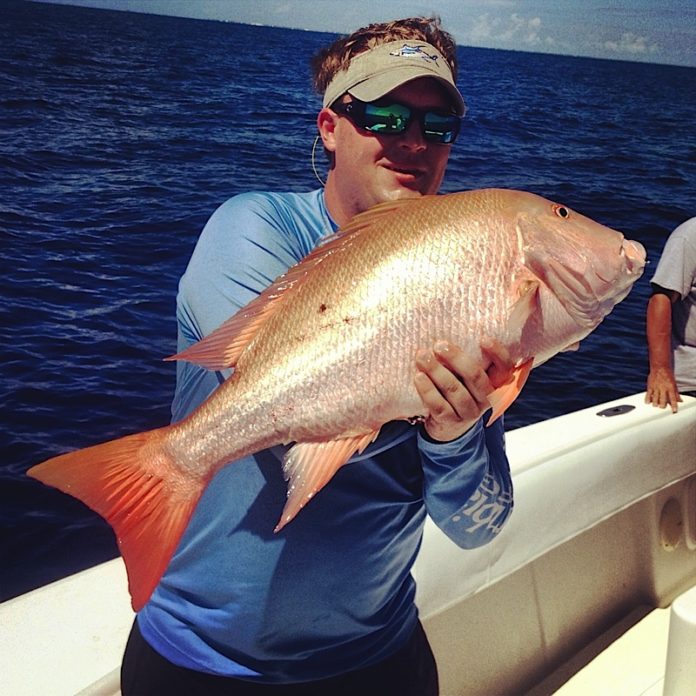
A change in season also brings a change in the fishing. October is a transition month for fishing in the Florida Keys. Fish that have been in our offshore waters, like dolphin, are beginning to migrate away, while the colder weather species, such as sailfish, wahoo, and kingfish, will start swimming back to the Keys. This is one of the only months that you have a shot at catching any, or all of these fish on a single trip! Throw in the excellent snapper and grouper fishing on the reef and wrecks, and it all adds up to October being a great month to fish in the Florida Keys.
Another great thing about this time of year is that all of these fish can be caught within a few miles from shore. Cobias, sails, kings, black fin tunas, wahoo and more can all be targeted on the edge of the reef, which is just a short boat ride from the dock. This is also the season when sailfish and a few dolphin push in close to feed on ballyhoo. We catch many of these fish in just 20-30 feet of water. If you’ve never experienced the thrill of watching and catching aggressive pelagic fish as they feed on ballyhoo in the shallows, I highly recommend heading out and getting in on the action.
In the next few months, as the cold fronts move through (hopefully) and drop the water temperatures, you should be prepared to target any one of these species on a particular trip. The ballyhoo are extremely thick, so a great way to start your day is to anchor up on a patch reef or rock pile and get a good chum slick going to attract your ballyhoo. Then while you’re waiting on your “hoos” to show up, pitch out a small live pinfish (or fresh cut pinfish) on a jig-head using 15-30 pound fluorocarbon leader. The mangrove snapper bite has been excellent from 20 to 30 feet of water, with some exceeding five pounds! Once the ballyhoo show up throw the cast net or catch them one by one using a hair hook tipped with shrimp or a sabiki rig. It will take longer to load the well catching your ballyhoos with hook and line, but if you take proper care and use a dehooker when taking the bait off the hook, it will often stay alive and active longer than those baits caught in the cast net.
A change in the water temperature also brings back a much needed fish to our local, shallow waters … the pilchard. During summer months, these bait fish move to the reef in search of deeper, cooler waters, so it’s pretty hard to find them. During cooler months though, pilchards move back into the shallow waters, where they are much easier to catch with a cast net. Here in the Middle Keys, pilchards are our prime bait for catching sailfish, kingfish, wahoo, etc, so it’s always a good idea to have a couple hundred of these bait fish in your live-well, you’ll definitely use them.
After loading up on your ballyhoo or pilchards you now have a few choices. One, you can continue fishing the patch reefs for mangrove snappers (mangroves love live and fresh cut ballyhoo), with the chance at landing a keeper grouper or mutton as well. Two, you can head out to the edge of the reef and put out a spread in hopes of catching sailfish, dolphin, cobia, tuna, kingfish, or wahoo. Three, you can spend time deep-dropping on the wrecks for mutton snapper, amberjack or occasional grouper. On a side note about fishing the wrecks, over the next few months you can expect pelagic species, such as blackfin tuna, wahoo and sailfish to congregate around some wrecks. So don’t hesitate to put a couple live baits up on the surface to attract these migratory species while you’re deep dropping for bottom fish. The great thing about fishing during October, is that you really do have the chance to try a variety of fishing techniques on the same day if you would like!















